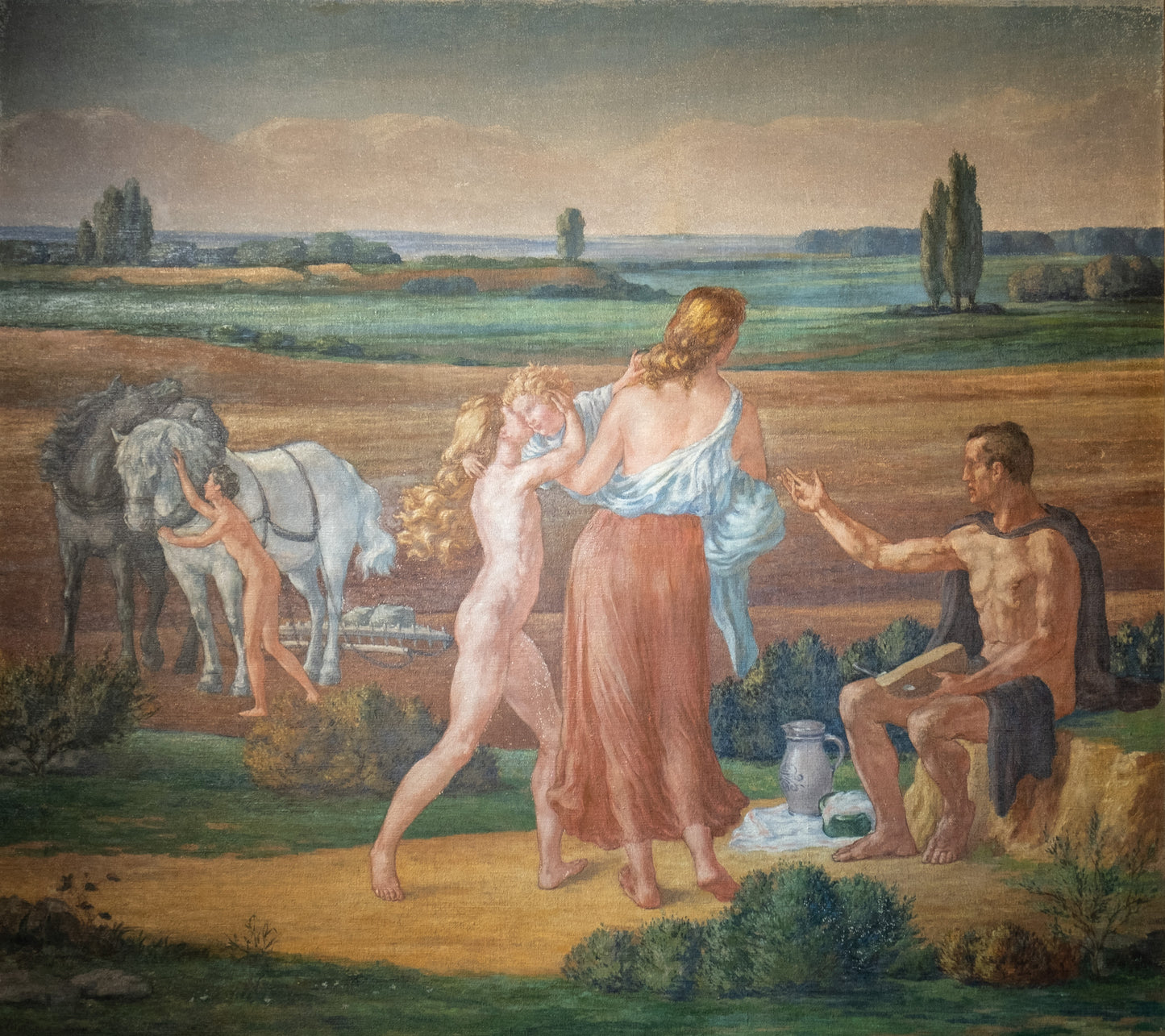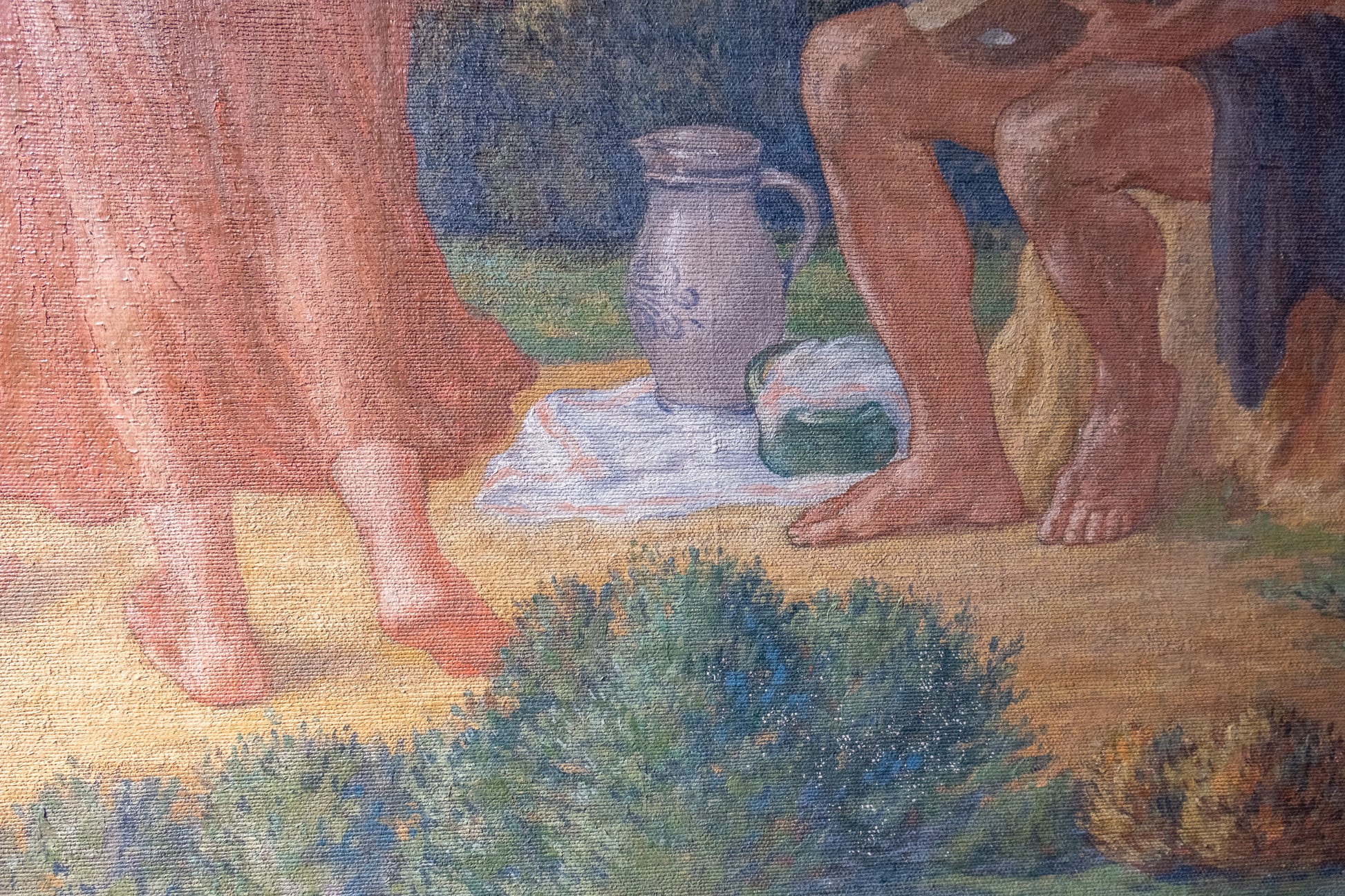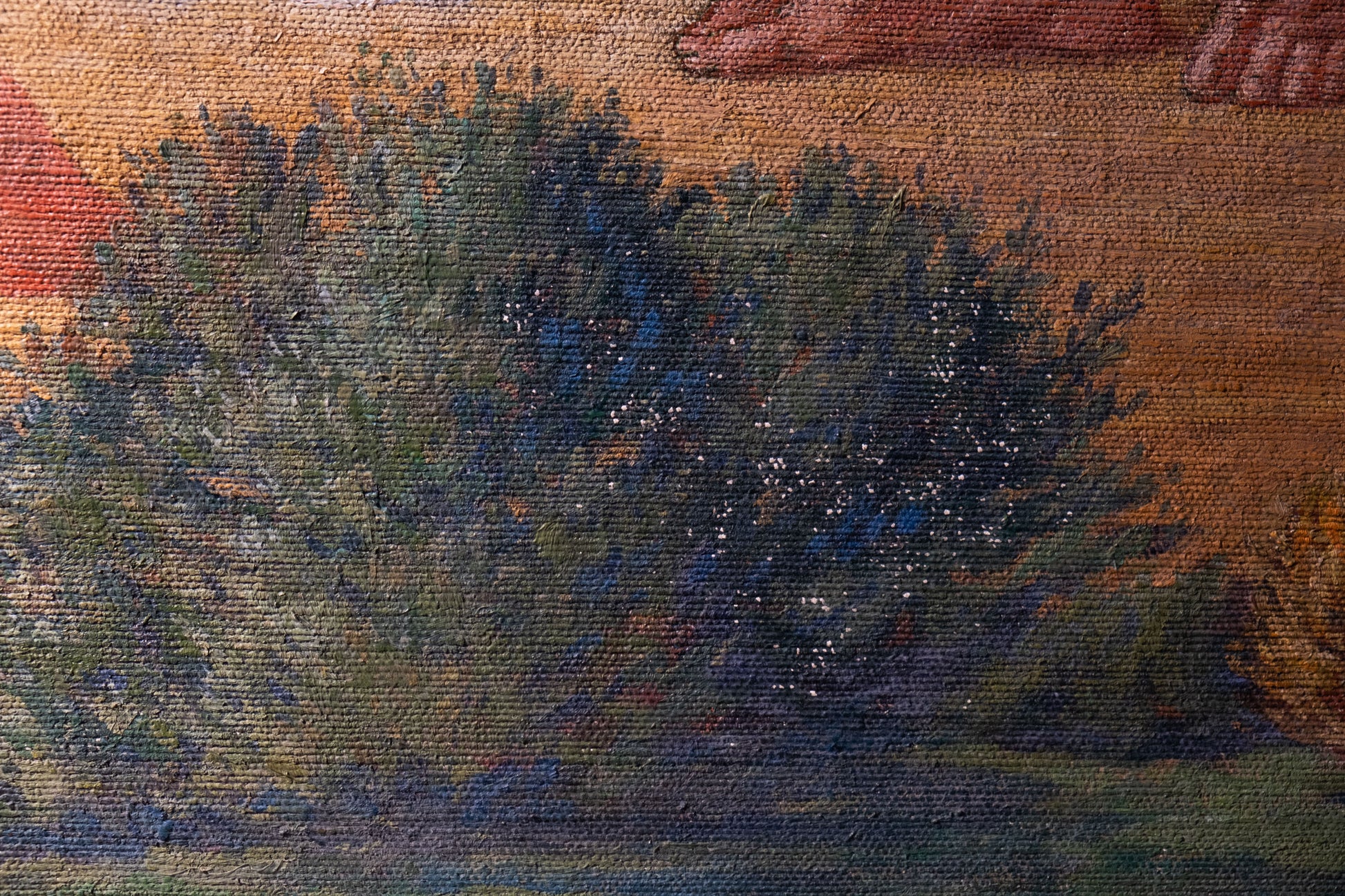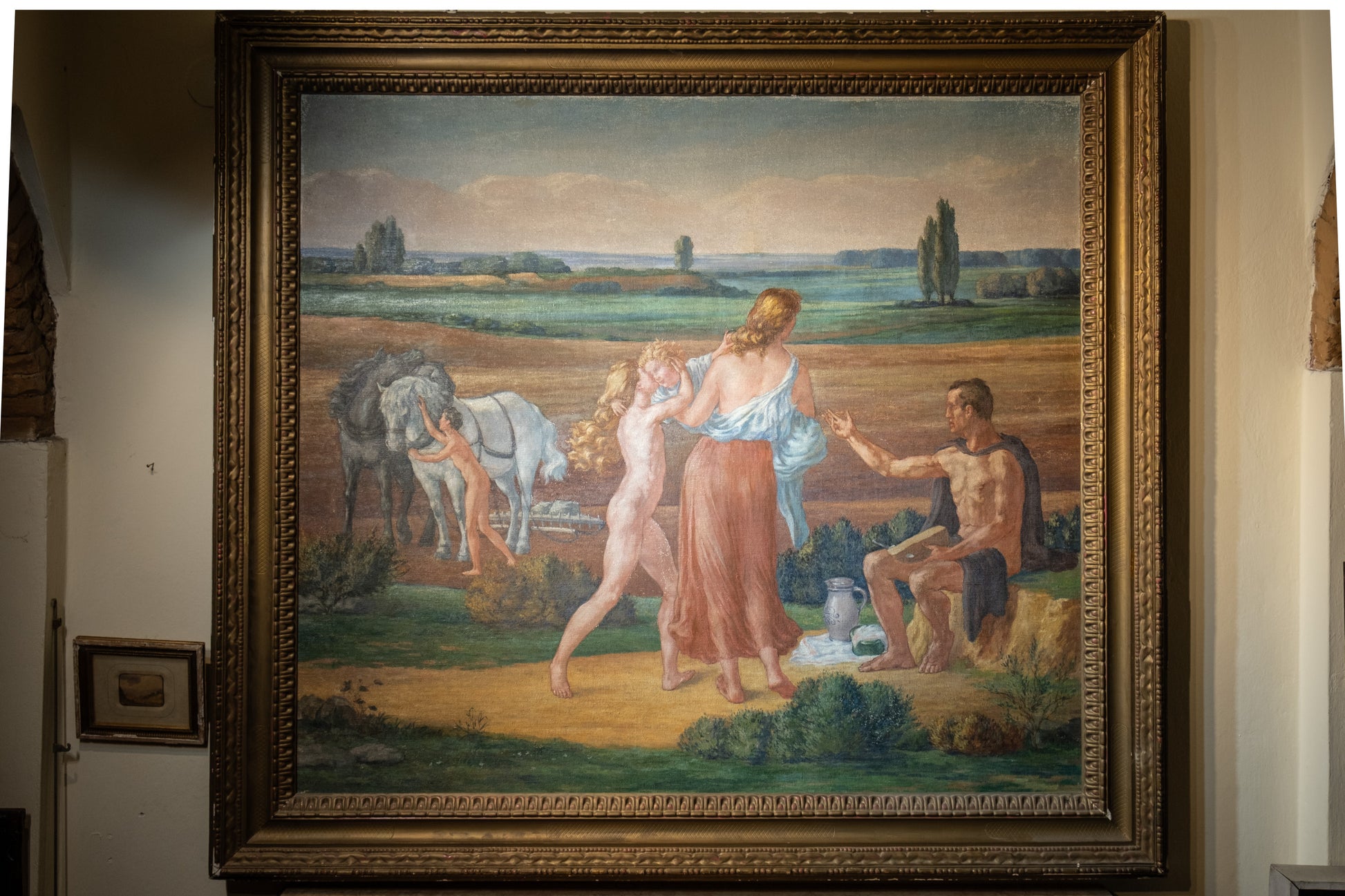@alina.malova
Paesaggio simbolista con simboli della terra. Artista: Prosper Colmant. Datato 1912. Cm 161x180
Paesaggio simbolista con simboli della terra. Artista: Prosper Colmant. Datato 1912. Cm 161x180
Impossibile caricare la disponibilità di ritiro
PRENOTATO
Paesaggio simbolista con simboli della Terra
Firmato in basso a sinistra: Prosper-Louis Colmant (1867-1943)
Datato 1912
Tecnica : Olio su tela
Dimensioni : 180 x 161 cm
Firma : Firmato in basso a sinistra "P. Colmant (19)12"
Quest'opera raffigura un paesaggio primordiale e austero, dominato da terra e pietre, che evoca un mondo alle origini della civiltà. Le figure umane e gli elementi naturali sono inseriti in un'ambientazione che ricorda i paesaggi monumentali e arcaicizzanti degli affreschi del primo Rinascimento. La semplicità della composizione e la superficie materica conferiscono al dipinto una qualità sacra e senza tempo.
La tecnica dell'artista, con la sua superficie opaca e ruvida, accentua deliberatamente questo effetto arcaizzante, richiamando l'antica pittura murale. Colmant sembra ricercare un dialogo con tradizioni millenarie, fondendo natura e spiritualità, ponendo lo spettatore di fronte a una scena ricca di simboli universali.
Prosper-Louis Colmant fu membro del gruppo artistico belga Pour l'Art , fondato nel 1892 a Bruxelles. Questo collettivo si distinse per il suo approccio idealistico e spirituale, in contrasto con il naturalismo dell'epoca. Gli artisti del gruppo furono influenzati da idee simboliste ed esoteriche , condividendo la convinzione che l'arte potesse servire come mezzo per esplorare significati profondi e trascendenti.
All'epoca, Bruxelles era un centro dinamico del simbolismo europeo, mantenendo stretti legami con movimenti esoterici francesi come l' Ordine della Rosa+Croce guidato da Joséphin Péladan. L'arte simbolista di questi circoli era intrisa di estetica spirituale e di interesse per i miti universali, temi che risuonano nell'opera di Colmant.
Una nota sull'esoterismo :
In questo paesaggio, che evoca le origini dell'umanità e della civiltà, ogni elemento è intriso di significato simbolico:
- Le figure femminili rappresentano la Madre Terra, fonte di vita e fertilità, che si armonizza con l'ambiente arido per incarnare l'idea di un equilibrio primordiale tra natura e umanità.
- La figura maschile seduta , accompagnata da oggetti simbolici come pane e vasi, simboleggia il custode della saggezza ancestrale, che collega il lavoro umano con i doni della terra.
- Gli elementi naturali , nella loro semplicità, riflettono l'essenza della vita primitiva e la ciclicità dell'esistenza, tema centrale nella poetica simbolista.
- L'estetica arcaizzante, con superfici opache e una composizione volutamente minimalista, accentua il senso di tempo sospeso, come se il dipinto catturasse un frammento di un passato lontano e mitologico.
Provenienza e contesto storico :
Questo dipinto fu realizzato nel 1912, anno in cui Prosper-Louis Colmant partecipò alla X Esposizione Internazionale d'Arte di Venezia, esponendo nel Padiglione del Belgio. La sua appartenenza al gruppo Pour l'Art evidenzia la sua dedizione a una visione artistica che unisce idealismo, misticismo ed esplorazione di significati profondi.
Colmant realizzò anche importanti opere decorative, tra cui le allegorie che adornano il Municipio di Laeken, un sobborgo di Bruxelles. Queste opere esplorano temi simili legati al lavoro, alla comunità e al legame dell'umanità con la natura, dimostrando la capacità dell'artista di trasformare idee simboliche in potenti narrazioni visive.
Il dipinto è in ottime condizioni, con colori vivaci e una superficie opaca e strutturata che conserva l'effetto arcaizzante, rendendo pienamente leggibile il suo messaggio simbolico e spirituale.
Materiali
Materiali
Dimensioni
Dimensioni
Informazioni sulla cura
Informazioni sulla cura














Immagine con testo
Abbina il testo a un'immagine per mettere in risalto il prodotto, la collezione o il post del blog che hai scelto. Aggiungi dettagli sulla disponibilità, sullo stile o fornisci anche una recensione.













